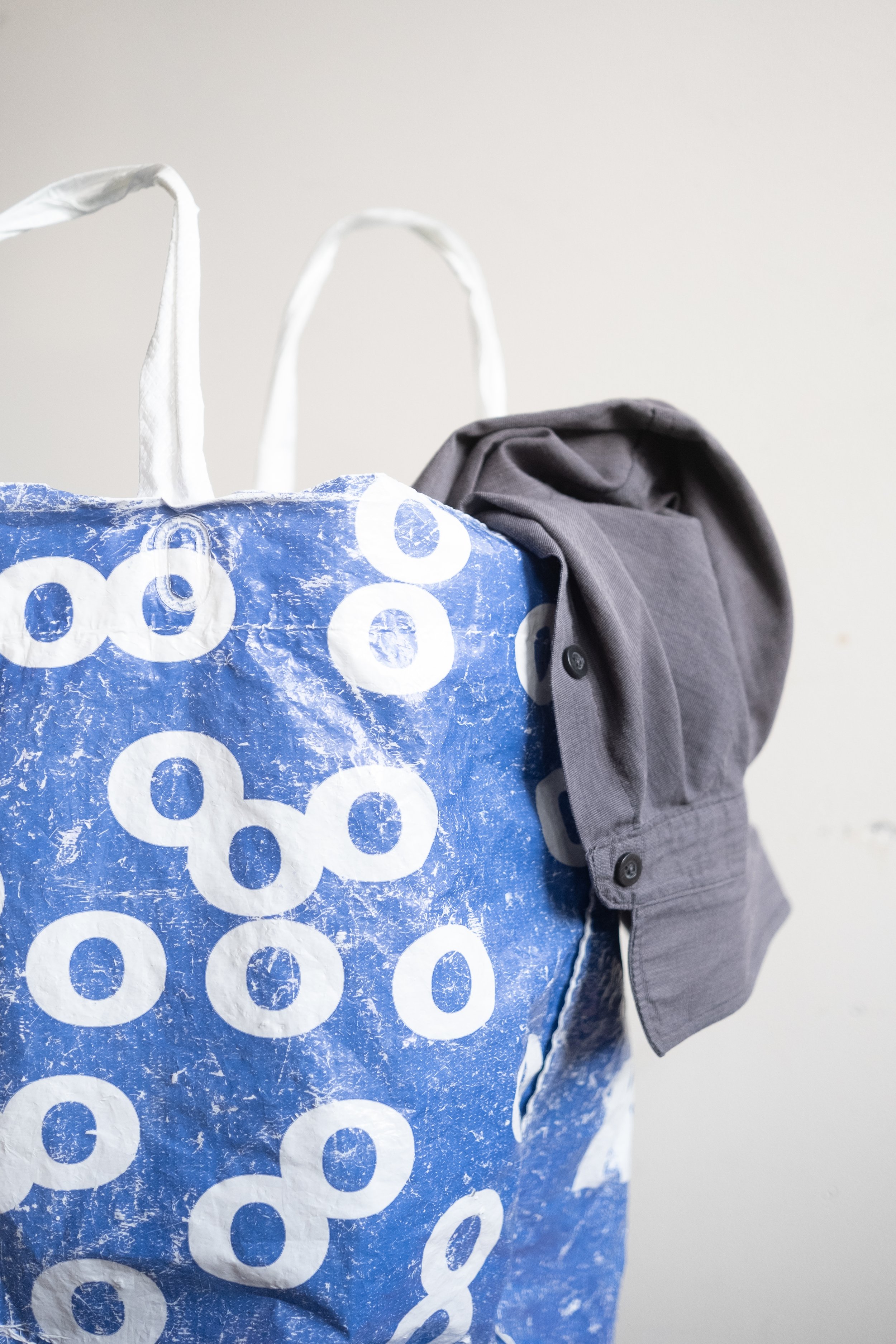dave & his comfort shirt
Dave explained that when he is emotionally overwhelmed, putting on this shirt is the first thing he does. Through the memories Dave shared, I learned that overwhelm didn’t always equate to a negative emotional experience, e.g. asking his wife to marry him, waiting to hear that his PhD thesis could be defended. In both cases he was certain the answer would be yes. He was not anxious or fearful but was anticipating the explosion of emotions that could be difficult to process. The familiarity of the embrace of this shirt comforted Dave in these moments.
“When the shirt was younger I wore it to work a lot, especially on days that I knew were going to be particularly difficult. You know when you are younger and you want your mum in the room with you, it sort of took on that role as I got older. But now the shirt is old. There are buttons missing and there is a rip somewhere under the arm hole. So I only wear it at home. But still, I put it on almost every single day”
On the chair between Dave and I, he extracted the shirt from a plastic shopping bag. Dave checked the care label. It informed him that the shirt is 100% polyester and can be washed at 40oC. The lack of wrinkles, despite Dave having transported the shirt in the plastic bag, demonstrates it doesn’t require much care. As Dave looked at the label I saw that the seam is a combination of an overlap seam and a flat lock which, as the name suggests, lies flat against the body. A more expensive shirt would traditionally have felled seams but these flat locked seams did not appear to be an irritant for Dave. He pointed out how the fabric had started to wear at the corners and edges, particularly along the placard of the cuff. Of the bottom three buttons, one was missing, another had noticeably been reattached on several occasions and one did not match the other buttons suggesting it has been replaced. There is a snobbishness in me that would describe a €5 synthetic shirt as poor quality, yet it has held up surprisingly well given its age, frequency of use and Dave’s fidgeting habits.
Dave admitted that he too is less than enamoured by the drab aesthetic of the shirt. It certainly does little to express Dave’s vivacious personality. He would love something with “more colour, and a more flattering silhouette”, but he needs the same feeling of this fabric. He is certain that the emotional feeling of the fabric is comfort, but it is the shirt’s physical attributes that he is struggling to unpick. Stroking the fabric, Dave described it as having a “fluffiness”. However, under my fingers it melted like butter, more akin to silk. It is smoother on the outside than against the body. I began to imagine how satisfying it is to rub one’s fingers along its smoothness when worn on the body. As I moved it between my hands, imagining how it is for the body to move in it, the silkiness dissipated. There was a resistance that is not present in natural fabrics. The weave was fine but the polymer fibres created a more staccato movement than silk. When I expressed this observation Dave pointed out that he doesn't move so much in it. It is not a requirement when resting at home, but better freedom of movement was something he would appreciate in his work clothing. I suggested it is not very breathable, which Dave never raised as an issue. Listening back to the voice recordings of the interview, I notice that my written notes often did not reflect the explicit needs that Dave vocalises. Rather, I project his needs as a fashion designer who knows best. I learn to pay attention to this cross-contamination when working with Dave and participants to come. I am an ethnographer in this phase of the research, documenting lived experiences as they are, not intervening to alter them.
This is an extract taken from a PhD which will be published in 2025

